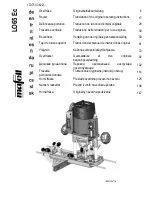
Configuring Spanning Tree
Defining Spanning Tree
Cisco Small Business SFE/SGE Managed Switches Administration Guide
254
10
convergence. STP convergence can take 30-60 seconds in large networks.
The possible values are:
-
Enabled
— Port Fast is enabled.
-
Disabled
— Port Fast is disabled.
-
Auto
— Port Fast mode is enabled a few seconds after the interface
becomes active.
•
Root Guard — Prevents devices outside the network core from being assigned
the spanning tree root. Root Guard may be enabled or disabled.
•
BPDU Guard — Indicates if BPDU Guard is enabled on the interface. BPDU
Guard protects the network from invalid configurations. It is usually used either
when fast link ports (ports connected to clients) are enabled or when STP is
disabled. If a BPDU message is received, the port shuts down and the device
generates an appropriate SNMP trap. The possible field values are:
-
Enable
— Enables BPDU guard on the selected port or LAG.
-
Disable
— Disables BPDU guard on the selected port or LAG. This is the
default value.
•
Port State — Displays the current STP state of a port. If enabled, the port state
determines what forwarding action is taken on traffic. Possible port states are:
-
Disabled
— Indicates that STP is currently disabled on the port. The port
forwards traffic while learning MAC addresses.
-
Blocking
— Indicates that the port is currently blocked and cannot
forward traffic or learn MAC addresses.
-
Listening
— Indicates that the port is in Listening mode. The port cannot
forward traffic nor can it learn MAC addresses.
-
Learning
— Indicates that the port is in Learning mode. The port cannot
forward traffic, however it can learn new MAC addresses.
-
Forwarding
— Indicates that the port is in Forwarding mode. The port
can forward traffic and learn new MAC addresses.
•
Port Role — Displays the port role assigned by the STP algorithm to provide to
STP paths. The possible field values are:
-
Root
— Provides the lowest cost path to forward packets to the root
switch.
















































